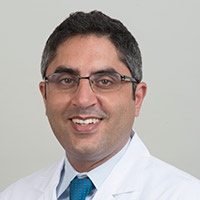 MedicalResearch.com Interview with:
Hui Zhu, MD, ScD
MedicalResearch.com Interview with:
Hui Zhu, MD, ScD
Section Chief, Urology Section
Louis Stokes Cleveland Veterans Affairs Medical Center
and Staff, Glickman Urological and Kidney Institute, Cleveland Clinic Foundation
Cleveland, Ohio
MedicalResearch: Tell me a little bit about the impetus for this study. What gap in knowledge were you trying to fill?
Dr. Zhu: Prostate cancer is a very challenging disease to understand and manage. For the minority of men, prostate cancer is a lethal disease, and in fact, it is the second leading cause of cancer death in American men, behind only lung cancer. However, for the majority of men, prostate cancer poses little risk of death. In fact, about 1 man in 7 will be diagnosed with prostate cancer during his lifetime, but only 1 man in 38 will die from prostate cancer.
In an effort to avoid suffering and death from prostate cancer for those men with the lethal form, the early detection of prostate cancer (before the disease has reached a stage when it is no longer curable) through widespread prostate cancer screening was instituted in the late 1980s and early 1990s. As a result, prostate cancer diagnosis increased substantially, and most prostate cancers were detected at an early, treatable stage. Screening successfully reduced the risk of death from prostate cancer by 20%.
Unfortunately, our best available screening tests, i.e. prostate-specific antigen (PSA) testing and the digital rectal exam, do not differentiate well between lethal and nonlethal prostate cancer. Consequently, screening is associated with a high risk of overdiagnosis of nonlethal prostate cancer. As a result, about 800 men must be screened and about 30 men must be diagnosed and treated to avoid one death from the prostate cancer, according to recent results from the largest prostate cancer screening trial.
Since the natural history of newly diagnosed screen-detected prostate cancer is difficult to predict (i.e. lethal or nonlethal), most prostate cancers have been treated aggressively, leading to overtreatment of many nonlethal cancers. Aside from receiving unnecessary treatment, these men are exposed to the potential side effects and complications of treatment, including erectile dysfunction and urinary incontinence.
In response to the harms associated with screening and treatment, the US Preventative Services Task Force issued a statement in 2011 (formalized in 2012) recommending against prostate cancer screening in all men. Unfortunately, while minimizing the risks of overdiagnosis and overtreatment for men with nonlethal prostate cancer, this solution eliminates any of the potential benefits of screening for those men with the lethal form of the disease.
As urologists, our solution is different. Rather than throw the baby out with the bathwater, we prefer to preserve PSA screening and its benefits by addressing and hopefully minimizing its associated risks. To achieve this, our goal is to better distinguish between those men who have lethal vs. nonlethal prostate cancer, limiting treatment only to those men who have the lethal form of the disease at an early stage when it is still curable. The dilemma is that our currently available diagnostic tests are unable to accurately differentiate lethal from nonlethal prostate cancer with 100% certainty at the time of initial diagnosis.
The solution, or at least part of the solution, is active surveillance. In men who appear to have nonlethal (“low risk”) cancer at the time of diagnosis, it now appears to be safe to observe these cancers, at least initially. This is the concept behind active surveillance. Active surveillance entails carefully monitoring men with low-risk prostate cancer using serial testing and reserving the option of treatment for those men with prostate cancers that exhibit lethal characteristics. In this way, active surveillance preserves the benefits of screening while minimizing the harms of overdiagnosis and overtreatment.
Active surveillance was first introduced in the early 2000s, but its efficacy and safety have only been elucidated recently over the last 5 years. Given that active surveillance may be one solution to the screening dilemma, we wanted to evaluate contemporary active surveillance utilization, which is the impetus for our study. Based on the most recent data available to us, we chose the years 2010-2011, which coincide to the time immediately before and during the release of the US Preventative Services Task Force statement against PSA screening.
(more…)


















